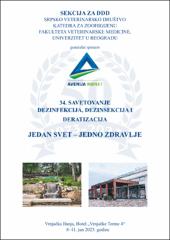| dc.description.abstract | Lice can be a menace to humans, pets, and livestock, not only through their
blood-feeding or chewing habits but also because of their ability to transmit
pathogens. The human body louse has been indirectly responsible for inluencing human history through its ability to transmit the causative agents of epidemic
typhus and trench fever. Almost 5000 species of lice have been identiied, of which
about 4000 parasitize birds and 800 mammals. Lice are present on all continents
in all habitats occupied by host animals and birds. There are even in Antarctica,
where penguins carry 15 species of lice (from the genera Austrogonoides and
Nesiotinus). The Phthiraptera are divided into two main morphologically distinct
groups: sucking lice and chewing lice. All sucking lice are obligate, hematophagous
ectoparasites of placental mammals, whereas the more diverse chewing
lice include species that are obligate associates of birds, marsupials, or placental
mammals. Although certain chewing lice imbibe blood, most species ingest host
feathers, fur, skin, or skin products. Because of the different feeding strategies of
the two groups, the blood-feeding sucking lice are far more important than the
chewing lice in transmitting pathogens to their hosts. | en_US |

